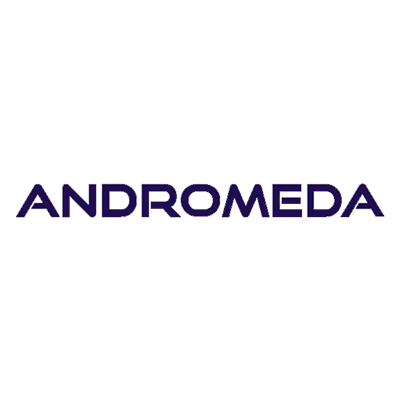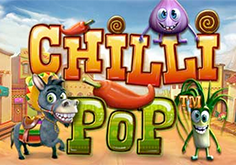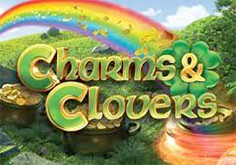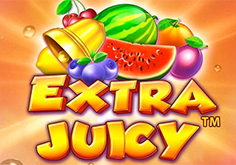Online Casino South Africa
-
Gamblers who are looking for a legal and best-paying online casino have come to the right place because this website provides the assortment of top online casinos that stand out for their excellence, offer a great number of promotions and are famous for being professional and reliable. Here South African gamblers will be spoilt for choice of where to play and receive special bonuses after registering an account. All the SA online casinos available on this website have been handpicked carefully to make sure users get the best value possible for their time and money.
To get a thrilling entertainment and spice up your life with excellent gambling experience, the online casino of your choice should match your requirements and provide seamless action both in the comfort of home or while on the go. Perhaps no surprise, many online gambling venues fall short of current standards in quality and security so those who are completely new to online casinos have to scrutinize each gambling site to find the most suitable one. The online casinos listed on Africacasinos.co.za feature a wealth of games from top-ranked game providers that have proven their quality and popularity for many years of global operations. New releases are rolled out on a regular basis and are added to online casinos in South Africa for you to be among the first users to enjoy the new titles.
BEST ONLINE CASINOS
- Crypto accepted
- Bitcoin reload bonuses
- Ongoing fast (10-minute-long) tourneys
- 24/7 Customer Service
- Online since: 2016
- Licensed by: Curacao
- Owned by: Lynton Limited
- Slots
- Live Casino
- Blackjack
- Roulette
- Keno
- Craps
- Baccarat
- Video Poker
- Scratch Cards
- Numerous bonuses and promotions
- Big welcome package
- Bitcoin allowed for deposit/cashout
- Friendly withdrawal policy
- Online since: 2017
- Licensed by: Panama
- Owned by: BetOnline CEO Eddie Robbins
- Slots
- Live Casino
- Blackjack
- Roulette
- Keno
- Craps
- Baccarat
- Video Poker
- Scratch Cards
- Plenty of lotteries and tourneys with cash prizes
- Valuable rewards for unlocking VIP levels
- Many Player Help channels, incl. toll-free phone numbers
- Online since: 2009
- Licensed by: Curacao
- Owned by: Genesys Technology N.V.
- Slots
- Live Casino
- Blackjack
- Roulette
- Keno
- Craps
- Baccarat
- Video Poker
- Good selection of games with a progressive jackpot
- Separate section for classic slots
- Guides and strategies to casino games
- Great offer for VIP players
- Online since: 2020
- Licensed by: Curacao
- Owned by: Digital Adversary Marketing
- Slots
- Live Casino
- Blackjack
- Roulette
- Keno
- Craps
- Baccarat
- Video Poker
- Scratch Cards
- A wide range of games
- Nice sci-fi themed design
- High max bet ($10) for bonus wagering
- Bitcoin-friendly
- Online since: 2021
- Licensed by: Curacao
- Owned by: Trollface Ltd
- Slots
- Live Casino
- Blackjack
- Roulette
- Keno
- Craps
- Baccarat
- Video Poker
- Scratch Cards
- Crypto-friendly casino
- Comfortable withdrawal limits
- Many bonuses for newcomers and regulars
- High-roller table games
- Online since: 2020
- Licensed by: Panama
- Owned by: BetOnline CEO Eddie Robbins
- Slots
- Live Casino
- Blackjack
- Roulette
- Keno
- Craps
- Baccarat
- Video Poker
- Scratch Cards
- Plenty of local progressive jackpots
- Bitcoin deposits and cashouts are allowed
- Low playthrough (x5) for welcome bonuses
- Online since: 2004
- Licensed by: Costa Rica
- Owned by: Virtual Casino Group
- Slots
- Blackjack
- Roulette
- Keno
- Craps
- Baccarat
- Video Poker
- Scratch Cards
- Approved and trusted by many reputable gambling portals
- Excellent collection of three-reel slots by Rival
- Player may bet bitcoins
- Many Bitcoin promotions
- Online since: 2016
- Licensed by: Curacao
- Owned by: Beaufort Media B.V.
- Slots
- Live Casino
- Blackjack
- Roulette
- Keno
- Craps
- Baccarat
- Video Poker
- Scratch Cards
- Instant and Download casino
- Many local progressive jackpots
- A plethora of bonuses and promotions
- Online since: 2009
- Licensed by: Costa Rica
- Owned by: BTK Ltd
- Slots
- Blackjack
- Roulette
- Keno
- Craps
- Baccarat
- Video Poker
- Scratch Cards
- Versatile (but not big) selection of games
- Generous cashback with no max cashout
- Lots of free spin bonuses
- Good Loyalty Rewards program
- Online since: 2020
- Licensed by: Malta Gaming Authority
- Slots
- Live Casino
- Blackjack
- Roulette
- Keno
- Baccarat
- Video Poker
- Scratch Cards
Choosing the best online casinos in South Africa
-
1
SA-friendly
The list of gambling sites published on Africacasinos welcomes players from South Africa. You are allowed to create an account with all of these casinos, transfer money to the account, bet and withdraw real money and take part in all bonus actions developed for players. Most online casinos in our Top Picks list have comfortable payment options and a plenty of video slots well-liked in South Africa.
-
2
Bonus system
Top online casinos boast of running a sophisticated bonus program with many types of bonuses (reload, cashback, etc.) ready to be claimed almost every day. Our expert team pay special attention at online casinos that feature proper bonus terms and conditions with easy wagering and a variety of promotions.
-
3
Software and games
Variety and software quality are the key pillars that lie at the heart of a good online casino. We go for the casino sites that offer a great deal of slots, table games and live games from numerous software makers, favoring the ones with high-paying online casino games.
-
4
Payment options
We pick online casinos that offer a wide variety of banking options to South African players. You can deposit money to the account via credit cards, ewallets, bitcoin and using other options. All transactions are fast, smooth and absolutely secure. The best online casinos have no deposit fees and user-friendly min/max transaction limits.
-
5
Withdrawal policy
The way withdrawal is processed and paid out is of utmost importance, that is why our experts have to explore many aspects in this regard. We offer you the best online casinos that have quick payout times (appr. 24–36 hours), fast verification of new players, a variety of withdrawal options, favorable limits and no fees.
-
6
Gambling licenses
Every legal online casino must have an effective license issued in a high-profile jurisdiction (e.g. Curacao, UK Gaming Commission). The best online casinos also bear certificates of compliance and undergo RNG tests run by independent auditing companies. You may rest assured that our experts peel apart the casinos that do not hold gambling licenses.
-
7
Easy to use and navigate
The online casino’s look and feel contribute to the general player experience. You should have easy access to games, banking, customer support and other casino pages. Navigation must be clear, intuitive and predictable. The best online casino have designs evoking emotions which result in positive gambling experiences.
-
8
Customer Support
Good gambling sites that take care of their players provide an array of ways for reporting issues or asking questions. These include a hot line (by phone), live chat and email. The best casinos offered in Africacasinos respond and tackle problems quickly and professionally. Live Support often operates round the clock.
-
9
Reputation
Here, you will come across many online casinos with high rankings and first-class reputation on the gambling market. Our team factor many things to assess credibility of an online casino: player feedback, expert reviews, industry awards and customer service to name a few. Only reliable gambling sites that have never stained their reputation are on display here.
-
10
Mobile experience
All online casinos listed, reviewed and endorsed here have an excellent mobile compatibility and many HTML5 slots and table games. You can easily create an account, handle money transactions and enjoy playing on your mobile device safely and securely.
| 🇿🇦 #1 Online Casino for ZA: | ZAR Casino |
| 💰 Best Match Bonus Casino: | Casino Cruise |
| 💳 Minimum Deposit Casino: | Springbok |
| 🎰 Best Slots Casino: | Africasino |
Popular Payment Methods
-
![Easyeft]()
Easyeft
This is an affordable electronic fund transfer service that allows you to move funds to and from an online casino. The system is available only to customers who hold a South African bank account. EasyEFT is accepted on most SA-focused gambling sites and requires no registration prior to any fund transfer. Its key advantages are zero fees, bank-level security and no need to exchange currencies as transactions are made in Rand. Money usually goes through immediately.
Read more -
![Visa]()
Visa
Visa credit and debit cards are happily welcomed in almost every SA online casino. This international payment option is completely safe, secure and very fast when you send money to an online casino or withdraw your winnings. Friendly transaction limits, universal acceptance across casinos in South Africa and no fees when making a deposit make Visa some of the most commonly used options by local gamblers.
Read more
-
![Ecopayz]()
Ecopayz
ecoPayz is an electronic wallet with quick, multi-currency international transfers. A player may top up the wallet in many ways (credit card, bank transfer, etc.) and then move funds to SA online casinos that accept this payment method. When withdrawing funds from a casino, you can then transfer them to a third-party credit card (MasterCard, Visa) and then draw them in an ATM. The payment service has an iOS/Android app with many easy and convenient options.
Read more -
![Skrill]()
Skrill
A global e-wallet provider established in 2001. It allows international payments, so you can easily deposit to and receive money from overseas online casinos in 40 currencies, incl. Rand. You can make a transaction from a Skrill mobile app upon completing a fast signup process. When using this payment method, delivery times can range between a few minutes to a couple of working days. Mind that some casinos exempt Skrill payments from bonus offers.
Read more
-
![Bitcoin]()
Bitcoin
Bitcoin is a leading cryptocurrency widely used for online casino betting. BTC transfers are very quick and require no or small “miner fee”. Some online casinos run dedicated promotions for bitcoin users, thus encouraging them to use this payment option. Many gambling sites publish useful guidelines on how to buy, store and sell BTC, which a newcomer is advised to read. You can purchase bitcoins for Rands or other currency in any crypto exchange.
Read more -
![MasterCard]()
MasterCard
Widely recognized globally, MasterCard is a preferred payment option for many online casino players. Just pick this credit card option in an online casino, enter your card details, name, amount and other required cardholder info. With MasterCard’s enhanced security and advanced customer protection, many other payment operators just pale in comparison with it. While deposits are immediate, withdrawal may take some time to complete.
Read more
-
![Litecoin]()
Litecoin
Ranking second in popularity and circulation, LTC was created in 2011 as an alternative to Bitcoin. Like with any blockchain crypto, Litecoin is a decentralized, extremely secure altcoin that is readily accepted in some South African online casinos. It offers very quick transactions (often faster than BTC), with almost every payment arriving within a few minutes. Create a crypto wallet, buy LTC on an exchange and top up your gambling account anytime and anywhere.
Read more -
![Neteller]()
Neteller
The electronic money transfer service was the first to start processing online gambling payments back then in 2000. Today, this is a powerful platform enabling customers to open a Neteller account, load it with funds and then send them to gambling destinations. When retrieving winnings from online casino, you can move them to any popular credit card. Their fast and secure app lets you play, send and receive money from online casinos with a few taps.
Read more
Convenient deposits and quick withdrawals are one of key factors affecting the decision of whether or not play in a certain online casino. There should be clear terms of use for each payment method, friendly transaction limits and, certainly, a frictionless cashout process with reasonably fast approval times. All the SA online casinos reviewed here boast of an extensive range of payment options, both international and local, fiat and crypto. There are a lot of bitcoin online casinos that accept cryptocurrencies, and more popping up continuously.
Most online casinos listed on this site accept ZAR payments via debit/credit cards, electronic wallets and other payment options. As for withdrawal times, they are very fast and you may rest assured that all South African online casinos reviewed here are fully reliable. Besides, many online casinos feature very low withdrawal limits, thus enabling gamblers to cash out virtually any amount, however small it could be. Before the first cashout in your selected gambling site, you need to prove your identity and pass all security and verification procedures contemplated in each legal online casino.
How to play in an online casino
-
1.
Choose your preferred online casino
Selecting a proper gambling site underpins the entire casino experience. Browse our top picks available for South African players and choose the one that suits you most. Take notice of its features, read our reviews and ensure the casino offers your preferred payment options.
-
2.
Complete sign-up
Create a username and password. Enter the required information to the registration form, specifying your personal details. At this point, you may be asked to choose your account currency. Don’t worry about safety of your personal info if you are joining one of our top picks. You may be required to follow a verification link in the email sent to you by the casino.
-
3.
Deposit funds
Winning real money means you have to make a deposit first. Normally, online casinos have a variety of deposit options that are almost instant. Most casino sites have very low min limits (about ZAR100) so that you can proceed to playing as soon as possible. You may always view your current casino balance in the cashier.
-
4.
Play your favorite games
Now it’s high time to revel in the online casino and win real money. Browse through game providers, take a look at different types of slots, try to win a progressive jackpot and beat the dealer in blackjack. You may redeem bonus codes, complete for a winning position in freerolls and earn comp points. If necessary, you can always repeat step #3.
-
5.
Withdraw winnings
When you are going to cashout the funds earned in casino games, go to the cashier, pick a preferred withdrawal option and enter the required amount. Before the online casino approves and sends money, you may be required to prove your identity by submitting a few scanned documents (ID, driver’s license). Money will appear in your bank account or e-wallet within a few hours or days.
Online casino bonuses
-
Welcome bonuses
A new user may place the first deposit to the online casino and claim a welcome bonus that most often matches a deposited amount. E.g., if the welcome bonus is 100% and you have transferred ZAR200 to the casino, you will get an extra ZAR200 to play with. All bonus amounts have to be wagered a pre-defined number of times (aka Wagering Requirements), which is usually x30–x50. The majority of online casinos cover several initial deposits with a welcome package.
-
Reload bonuses
If a player has made a deposit, he may try to claim an active reload bonus that provides a certain percentage match to the deposit. The bonus money needs to be wagered in accordance with the bonus rules, after which it is credited to the real money account. E.g. if you get a ZAR200 bonus with the x40 WR, you will have to bet ZAR8000 to fulfill the WR.
-
Free spins
Similar to playing any pokie and triggering a free spin feature, many online casinos give a free spin bonus applicable to specific video slots. If you get the bonus and complete free spins, all winnings derived from them must be wagered an average of x30 to x50 times. In some instances, free spins can be included in a welcome package.
-
No-deposit bonuses
This appealing kind of bonus is rarely found in online casinos and players appear to get hold of it every time it becomes available. A normal NDB is relatively small (some ZAR100, ZAR200 or so) and can be redeemed without making a deposit as a pre-condition. It is not given as free cash; instead, a player has to wager it according to its rules attached (in general, over x50 times).
-
CASHBACK
If you experience a losing streak, do not worry but look closely if the online casino of your choice has a cashback bonus. It offers a certain amount back, based on how much you have lost during the timeframe covered by that bonus (a month, 10 days or so). E.g., your balance dropped to 0 from ZAR1000 and you have claimed a 15% cashback. This will give you ZAR150 back in bonus funds that you will have to wager pursuant to the bonus t&c (basically, x10 to x30).
-
Lotteries
The best online casinos listed here come up with prize giveaways and lotteries in which results are established randomly, so even low rollers can become winners. In some instances, lottery tickets are awarded for a deposited amount. Tournaments are a special kind of competition in which players are to spin the reels in qualifying slots and compete for a part of a prize pool.
Bonus programs are what makes online casinos especially tempting for many South African gamblers. When in the casino for the first time, you can take advantage of a welcome package that can increase your initial bankroll several times over. If you are a loyal customer, an online casino offers you extremely profitable free spins, deposit bonuses and other kinds of entertaining activities.
Playing for real money, you are subject to special VIP club membership that opens up new horizons in the world of online gambling. All the ZAR online casinos listed in Africacasinos.co.za stand out for their versatile bonus programs that are both entertaining and highly rewarding! It is also common that new online casinos offer phenomenal bonus programs to incentivize users to join and play more.
Popular Slots
Video slots have proven to be the most lavish type of games found in an online casino, as their prospective payouts can be millions of dollars. Slots are a preferred gaming option for most players who visit online casinos as they come with an immense number of themes, styles, graphical design and bonus features.
When online slots emerged over 20 years ago, they were quite simple and straightforward, with very few bonuses and unassuming graphics. As time was passing by, game studios used to put in place new approaches to slot formats and created new bonus features. So nowadays, there are video slots with a conventional 5x3 field, classic 3x3 slots, Hold & Win games, rare AWP machines and other cool kinds of video slots suited to every taste.
Video slots are the heart and centerpiece of each online casino in South Africa. In each title, there are low- and high-paying symbols, the latter being able to produce astounding wins of over 5000 times a bet, say nothing of progressive slots that can make you an instant millionaire. If you just want to relax, there is an autospin feature that spins the reels automatically for a set number of times.
Slots by provider
Players often have a favorite provider. Some like RTG for their local progressive jackpots, while others give priority to Pragmatic Play with their Megaways masterpieces and Drops & Wins events. Some players from South Africa fancy Net Entertainment, a top-tier industry giant that is known for an array of iconic slots (Gonzo’s Quest, Starburst), whilst many others make Novomatic their first choice. Every game studio has their own army of supporters who keep their eyes peeled on new releases and innovations.
South African players are lucky enough as they have access to dozens of supreme providers and their quality games since there are no legislative barriers that would block online gambling. Today, one can easily pick almost any provider, find its video slots, play for real money and seize winnings. Many online casinos have special filtering tools in the lobby enabling players to display games by a single provider and hide the rest.
Popular table games
-
![Blackjack]()
Online blackjack features dozens of rules variations, each having a slight effect on the total player return. The game is widely regarded as a game of chance, though a player needs to be well-versed in its rules in order to make correct decision on whether to hit, stand or do anything else. If you follow all points of the winning strategy, you can make the most of the odds, which are normally from 98% to 98.5%, and even greater.
Read more -
![Roulette]()
An awesome vibrant air around each roulette session, a fast spinning wheel featuring 37 (38) numbered sections, and a great range of bet types are just a few things that attract casino players. There are only three principal variations of roulette, yet each has a stunning variability in inside and outside bets to pick. No matter which roulette type you prefer as you can always try to apply a winning strategy and win big. Some roulette providers integrate high bet sizes on their tables ($5000+) but in most situations, the min bet is merely $1.
Read more -
![Craps]()
Appearing too complicated for a dummy, online craps is actually a fairly easy game with plenty of betting options and fast-paced action, though the table really looks messy in a way (in fact, a craps table is mirrored, with betting spots doubled for each side). All you need to do is get up all types of bets and learn which bets should be avoided. While advancing from a beginner to expert in craps, you will finally manage to take full advantage of the online craps odds.
Read more -
![Baccarat]()
A pure game of luck, online baccarat personifies a freak of chance and inevitability of fate, that is why the game is so loved in Asia. Baccarat has a very low entry threshold when it comes to skills. It will take you just a couple of minutes to learn the basics and understand the essence of the three bet types, Banker, Player and Tie. You cannot affect the gameplay after you have placed a bet¬–you just keep watching at the cards being dealt by the software to finally see the outcome. Some baccarat games have lots of side bets and bonus payouts.
Read more
All online casinos offer an exciting collection of online blackjack, roulette and other sorts of table and card games to fit every budgetary expectations. To win in some games, you need a bit of luck, while others require some knowledge of rules and skills. A large portion of table games is developed in a classic manner, having familiar, long-established rules, awards and types of bets. In the same breath, some game studios develop unique table games that do differ from common rules and styles. You are encouraged to join any of the best online casinos to explore what kinds of table & card games they have on display.
Before you are off and running in any online casino, you’d better get an insight into how table games work. E.g. online baccarat is relatively easy to learn, while online blackjack require plenty of quick thinking, wit and skill. With this in view, some practice would be nice in this respect if you are going to maximize your results out of it.
Live casino games

Comfortable, yet competitive atmosphere, friendly presenters and full immersion into the casino studio are what live games offer among other great things. Thanks to advanced high-definition streaming and perfect teamwork on the spot, live games produce that kind of authentic emotions and memorable atmosphere that no other casino game can compare with it in this particular. When you enter any live table, you will instantly see a real dealer sitting or staying at the table, announcing outcomes and talking to remote players who are miles away from the game studio at that time.
Online casinos of today tend to offer live game collections developed by many hi-tech game providers including Evolution, LuckyStreak and Ezugi to name a few. All of the mentioned and other game studios operating on the modern gambling market develop first-class live roulette, live blackjack and other live games which create a larger-than-life experience.
Read moreOnline Casinos FAQ
- Sign up if this is your first deposit – otherwise login
- Go to your account and find the banking section
- Choose the payment method and enter the deposited amount.










































